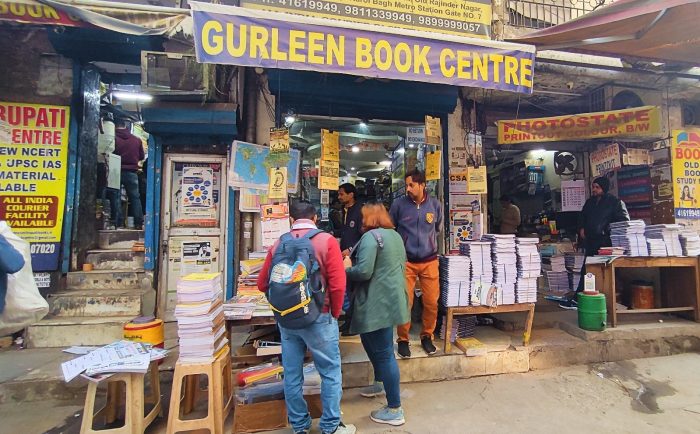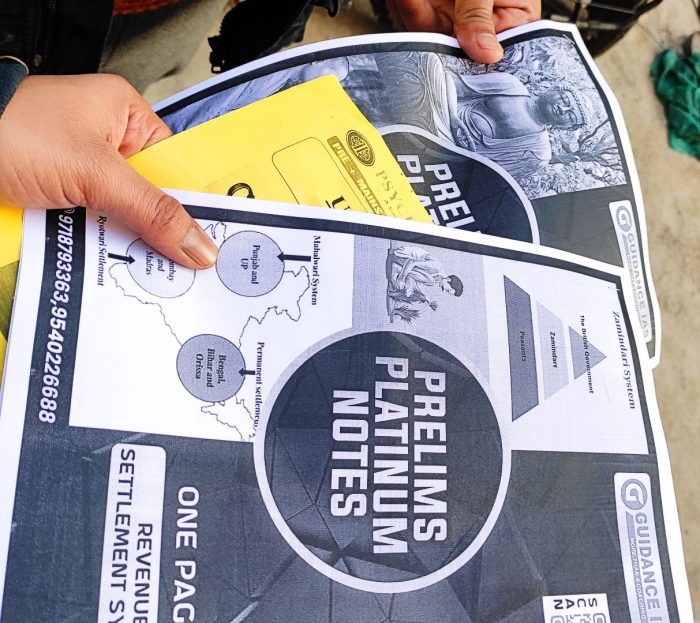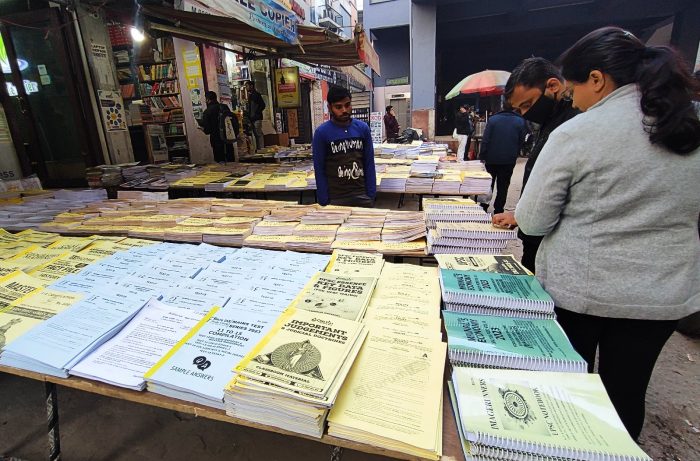The localities of Metropolitan Delhi with an estimated population of over 32 million were designed to have their own schools, colleges, offices, and retail shops that were originally meant to be in their own designated areas. However, as the city has grown beyond its original intent as a capital city, one of its main attractions is its universities, colleges, and schools.
The metropolitan city has expanded by 100 times in the past century. Now each of its residential neighborhoods contains not only educational institutions but also numerous facilities for teaching and coaching and job aspirants. While the majority of book production in the country is of formal textbooks, photocopying and short-run production of notes and sample papers have engendered the DIY digital print industry. Everything from PDF-driven single-copy books to project reports and case study files are printed on a variety of equipment – from monochrome photocopies to 4-color digital presses.
Just like Laxmi Nagar in the eastern part of Delhi, Rajendra Nagar in Central Delhi is one of the capital’s top coaching hubs, catering to the diverse variety of aspirants looking for civil service and banking jobs. The aspirants themselves are like in any of Delhi’s colonies or neighborhoods, from every part of the country. One of Delhi’s oldest residential colonies, Rajendra Nagar derives its name from Dr Rajendra Prasad, the first president of India. The area also prominently figures in the TVF series ‘Aspirants.’

Rajendra Nagar is home to a barrage of small printers on its main roads as well as tucked away in every nook and cranny of the busy neighborhood, teeming with students who line up to take photocopies of notes and sample questions.
Canon and Xerox are largely in use for black and white printing, whereas many printers prefer Konica Minolta and Ricoh presses for color printing. “The majority of the printers in old Rajendra Nagar are engaged in bulk printing and binding on a daily basis. We use the Ricoh Pro c901 for color printing, which is also used to print ID cards, entrance hall tickets, and the advertisement pamphlets of coaching institutes,” said the employees at Gurleen Book Store.
Monochrome copies for sample questions are much in demand as they are cheaper, they said. “Quality is of little consideration, whether it is the paper or the print, as students hardly care about anything else as long as the content is visible.”

OnlyIAS, another printer in the area, uses a Canon IR series for its bulk printing of black and white notes and sample papers, and a Konica Minolta Bizhub C368 CMYK-press for pamphlets and note covers. “Printing advertisement pamphlets, especially the colored ones, of coaching centers, generate a good amount of revenue. Although most of our prints are black and white, we use color printing to identify one subject from another. For example, we use yellow for law and judiciary, green for economics, and so on,” says a press operator at OnlyIAS.

However, Chaitanya Yadav, a UPSC aspirant seems to care. He says print is a better medium than reading PDF files. “I completed my post-graduation in 2022 and immediately landed in Rajendra Nagar to join a coaching institute. Reading on paper is more convenient as PDF files lack character. Preparation is a slow process and it feels more satisfying to stick up notes or pointers on the wall or cupboard as the information is readily available. You can easily lose focus and get distracted while reading on mobiles and laptops. That is why print will likely remain a pillar in the education segment.”

Printing does not end at just education. Local food vendors and coaching centers gain traffic with their digitally printed signage and billboards. Posters and handouts for PGs, tiffin providers and many other such services abound in the area.
Short-run print provides information about local services. It also offers vendors the opportunity to show their sense of humor. Fast food vendors and chaiwallahs had their handouts in Hindi offering special deals for students with a catchy tagline such as, “Single ko ek chai muft!” Technology has brought accessibility and immediacy to small businesses.

















